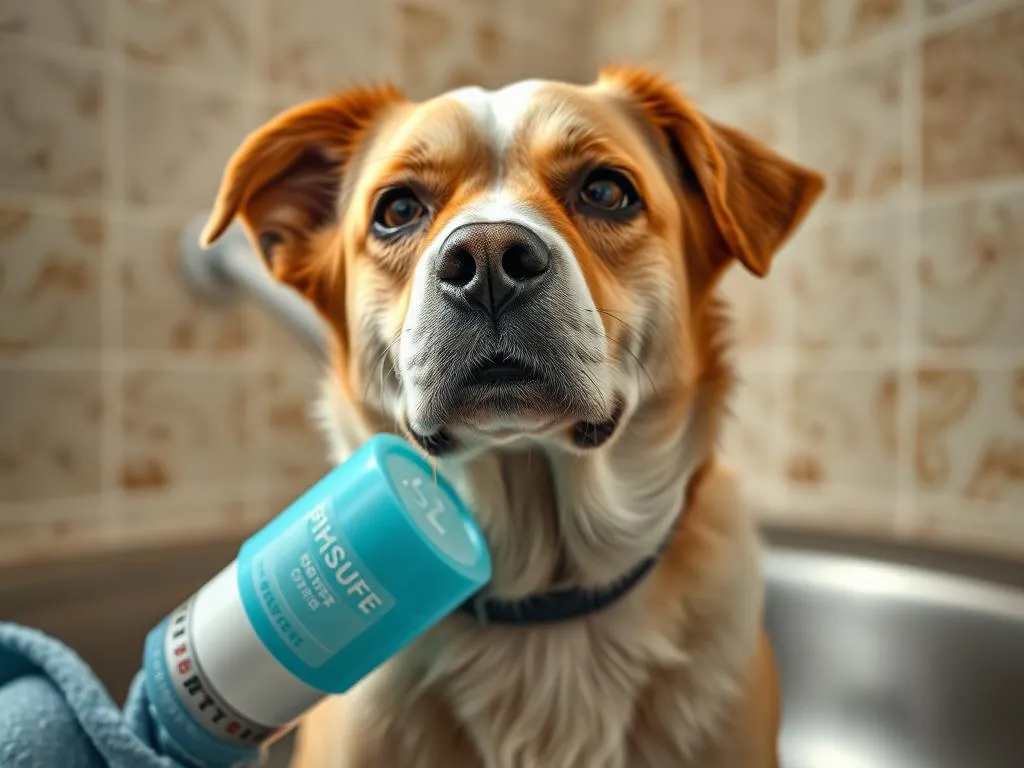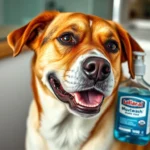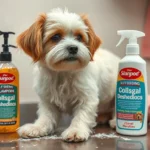
Introduction
Dog health care is a crucial aspect of responsible pet ownership. As dog owners, we strive to provide our furry companions with the best care possible, ensuring their well-being and happiness. One area that often goes overlooked is the safety of the products we use on our pets, particularly shampoos. While bathing our dogs is essential for maintaining their hygiene, it’s important to be aware of the potential risks associated with certain grooming products, including shampoo poisoning in dogs.
Shampoo poisoning can occur when dogs are exposed to toxic ingredients commonly found in grooming products. Understanding the symptoms, causes, treatment, and prevention strategies is vital for all dog owners, veterinarians, and pet groomers. This article aims to provide comprehensive insights into this important aspect of dog health care, enabling you to better protect your beloved pets.
Understanding Shampoo Poisoning
What is Shampoo Poisoning?
Shampoo poisoning refers to the adverse health effects that can occur when dogs are exposed to toxic ingredients in shampoos. This can happen through ingestion, skin absorption, or inhalation during bathing. The severity of poisoning can vary depending on the type and amount of shampoo ingested, as well as the individual dog’s health status.
Common Ingredients in Dog Shampoos
To understand the risks associated with shampoo poisoning, it’s essential to know what goes into these products. Common ingredients found in dog shampoos include:
- Fragrances: Often used to provide a pleasant scent, some fragrances can be irritating or toxic.
- Preservatives: Ingredients like parabens and formaldehyde can be harmful to dogs.
- Surfactants: These compounds help to create lather but may cause skin irritation or gastrointestinal distress if ingested.
Pet owners should be vigilant about the contents of the shampoos they choose, as many commercial products contain potentially harmful substances.
Risk Factors for Shampoo Poisoning
Certain factors can increase the likelihood of shampoo poisoning in dogs. These include:
- Breeds: Some breeds may be more sensitive to specific chemicals.
- Age: Puppies and older dogs may have compromised immune systems, making them more vulnerable.
- Health Conditions: Dogs with existing health issues may react more severely to toxic ingredients.
- Improper Usage: Accidental ingestion can occur if a dog licks the shampoo during a bath or if excess product is left on the skin.
By recognizing these risk factors, dog owners can take proactive measures to minimize the chances of shampoo poisoning.
Symptoms of Shampoo Poisoning
Immediate Symptoms
If a dog is affected by shampoo poisoning, the symptoms may manifest quickly. Common immediate symptoms include:
- Vomiting
- Diarrhea
- Lethargy
- Excessive drooling
- Skin irritation or rashes
The symptoms can vary based on the specific ingredients in the shampoo, so it is crucial to observe your dog closely after exposure.
Long-term Symptoms
In some cases, long-term effects may develop following shampoo poisoning. These can include:
- Chronic gastrointestinal issues
- Skin allergies
- Behavioral changes due to discomfort or pain
If your dog exhibits unusual behavior or symptoms long after exposure, it is vital to consult a veterinarian.
When to Seek Veterinary Care
Knowing when to seek veterinary care can make a significant difference in your dog’s health. If you notice any immediate symptoms after exposure to shampoo, it’s important to act promptly. Contact your veterinarian if your dog shows:
- Persistent vomiting or diarrhea
- Signs of distress or pain
- Skin reactions that worsen over time
Prompt treatment can prevent more severe health issues.
Diagnosis of Shampoo Poisoning
Veterinary Examination
If you suspect your dog has experienced shampoo poisoning, a veterinary examination is critical. During your visit, expect the veterinarian to conduct a thorough assessment, which may include:
- A physical examination to check for signs of distress.
- A review of the dog’s medical history and any recent exposure to grooming products.
Identifying Poisonous Ingredients
An important part of the diagnostic process involves identifying the specific ingredients in the shampoo used. Always bring the shampoo bottle with you to the vet, as this information can guide treatment decisions. Be prepared to provide details on how much your dog was exposed to and any symptoms observed.
Treatment Options for Shampoo Poisoning
Home Care
If you suspect shampoo poisoning but cannot reach a veterinarian immediately, there are initial steps you can take at home:
- Rinse the dog thoroughly with lukewarm water to remove any leftover shampoo from the skin and fur.
- Monitor for symptoms and keep an eye on their behavior.
- Do not induce vomiting unless specifically directed by a veterinarian, as this can sometimes worsen the situation.
Veterinary Treatment
Veterinary treatment for shampoo poisoning may include:
- IV fluids to prevent dehydration if your dog is vomiting or unable to keep food down.
- Activated charcoal to absorb toxins if ingested.
- Medications to manage symptoms such as nausea or irritation.
In severe cases, hospitalization may be necessary to provide intensive care and monitoring.
Prognosis and Recovery
The prognosis for dogs recovering from shampoo poisoning generally depends on the severity of the exposure and the promptness of treatment. Most dogs can recover fully with appropriate care, but recovery times may vary. Factors influencing recovery include:
- The specific toxic ingredient involved
- The amount ingested
- The overall health of the dog prior to exposure
Prevention of Shampoo Poisoning
Choosing Safe Products
Preventing shampoo poisoning starts with choosing safe grooming products. Here are some tips:
- Read labels carefully: Look for shampoos labeled as safe for dogs and free from harmful chemicals.
- Opt for natural products: Many brands offer organic or natural shampoos that are less likely to cause adverse reactions.
- Consult your veterinarian: Ask for recommendations on safe grooming products based on your dog’s specific needs.
Proper Bathing Techniques
Using the right bathing techniques can also minimize the risk of poisoning:
- Use only a small amount of shampoo: Avoid using excess product that may lead to residue.
- Rinse thoroughly: Ensure that all shampoo is washed out to prevent skin irritation or ingestion.
- Supervise your dog: Keep an eye on your dog during bath time to prevent accidental licking or ingestion of shampoo.
Training and Awareness
Educating yourself and others about shampoo poisoning is crucial. Attend workshops or read up on dog grooming and health care. Share knowledge with pet groomers and fellow dog owners to foster a community of awareness and safety.
What to Do in Case of Shampoo Poisoning
Immediate Steps to Take
If poisoning is suspected, follow this checklist:
- Remove your dog from the area where the shampoo was used.
- Rinse your dog thoroughly with lukewarm water.
- Observe for symptoms and note any changes in behavior.
- Contact your veterinarian or an emergency pet poison hotline for guidance.
Having emergency contact information readily available can be invaluable during a crisis.
Resources and Hotlines
Familiarize yourself with pet poison control hotlines and local veterinary services. Many national organizations provide resources for pet owners, including:
- ASPCA Animal Poison Control: A hotline for emergencies.
- Local veterinary clinics: Often have resources for immediate assistance.
Community support and education can play a vital role in dog health care, making it easier to respond to emergencies effectively.
Conclusion
Understanding shampoo poisoning in dogs is essential for every dog owner. By being aware of the symptoms, causes, treatment options, and preventive measures, you can significantly reduce the risks associated with grooming products. Staying informed and proactive will ensure that your dog remains healthy and safe.
As you continue to care for your furry friend, remember that knowledge is power. Share your experiences and insights with other dog owners to promote better health care practices in the community. Together, we can enhance the well-being of our beloved pets.
FAQs Section
What should I do if my dog licks shampoo?
If your dog licks shampoo, rinse their mouth out with water and monitor for any symptoms like vomiting or diarrhea. Contact your veterinarian for advice.
Can I use human shampoo on my dog?
Human shampoos are not formulated for canine skin and can lead to irritation or poisoning. Always use products specifically designed for dogs.
How can I tell if a shampoo is safe for my dog?
Look for products labeled as “dog-safe” or “non-toxic.” Check the ingredient list for any harmful additives, and consult your veterinarian if unsure.
What are some common myths about dog shampoos?
Many believe that all natural products are safe, but some natural ingredients can still be toxic. Always conduct thorough research and consult professionals.
How often should I bathe my dog?
Bathing frequency varies by breed and activity level. Generally, once a month is sufficient for most dogs, but consult your veterinarian for specific recommendations based on your dog’s needs.









